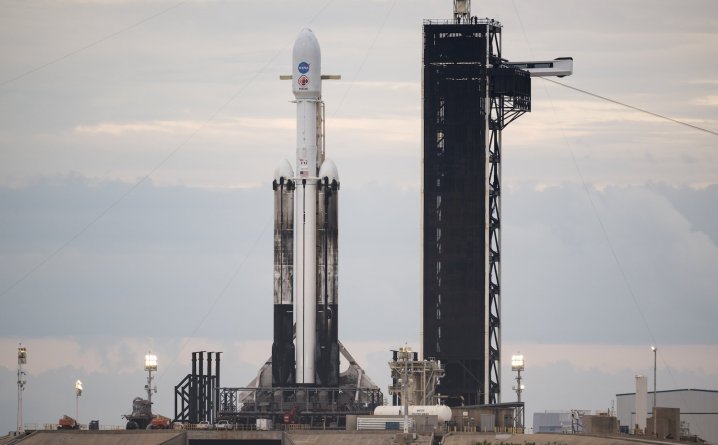
NASA and SpaceX have called off Thursday’s launch of the Psyche asteroid mission.
Officials blamed the delay on poor weather conditions at the Kennedy Space Center launch site in Florida.
They’re now aiming to launch SpaceX’s triple-booster Falcon Heavy rocket carrying the spacecraft at 10:19 a.m. ET on Friday, October 13. Live launch coverage will start at 9:15 a.m. ET on various NASA channels, including YouTube and NASA Live.
SpaceX’s triple-booster Falcon Heavy rocket, which is carrying the Psyche spacecraft, is on the launchpad and ready to fly.
The postponement, which was announced early evening on Wednesday, didn’t come as a big surprise as NASA had said a day earlier that the weather outlook for Thursday suggested there was only a 20% chance of acceptable weather conditions for launch.
If Friday doesn’t work out, the mission team has additional launch opportunities through October 25.
NASA’s Psyche mission is the first to explore an asteroid with a surface that scientists believe holds large amounts of metal rather than the usual rock and ice. The spacecraft will travel around 2.2 billion miles to a point between Mars and Jupiter in a journey to the asteroid that will take about six years. When it has the celestial body in its sights, the spacecraft will deploy an array of science instruments to examine the 170-mile-wide asteroid in the hope of gaining insight into the early stages of the solar system. Analysis could also reveal how rocky planets such as Earth and Mars formed billions of years ago.
The mission will also be NASA’s first deep space test of the laser-based Deep Space Optical Communications system, which should pave the way for higher bandwidth communications for future NASA missions.
In related news, NASA on Wednesday unveiled the sample of rock and dust that it gathered from the Bennu asteroid before being brought to Earth last month.
Editors' Recommendations
- SpaceX’s Falcon 9 rocket just completed a milestone mission
- SpaceX all set for a record-breaking rocket launch on Friday
- How to watch SpaceX launch the third flight of its Starship rocket on Thursday
- NASA’s Crew-7 astronauts splash down safely off the coast of Florida
- How to watch homecoming SpaceX astronauts fly overhead on Tuesday


